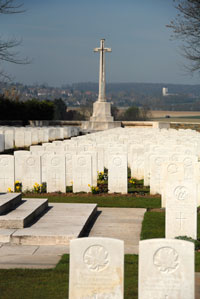Historic Casualty Identification
In the First and Second World Wars and the Korean War, nearly 28 000 members of Canada’s Army, Air Force and Navy were left with no known or maintainable grave. Every year, the remains of these formerly missing are discovered all over the world. Continuing the tradition of Canada’s Graves Registration Units, the purpose of Historic Casualty Identification is to find the identity of a set or sets of newly discovered remains of military personnel who went missing during active service.
The identification of unknown service personnel requires a combination of historical, anthropological and biological analysis - all or some of which is applied uniquely to each case. The majority of the Canadian Military’s missing derives from fighting in the First World War – particularly in North East France. The human remains of soldiers from all sides are frequently found during construction, farming and salvage – together with uniform parts, weapons, equipment and other debris. Some of the debris, such as unit-specific uniform buttons, provides the first clue toward identification; that of limiting the number of candidates to those missing from a particular regiment or aircraft. The list of candidates can oftentimes be further narrowed through historical research using war diaries and personnel records.
While the historical evidence can be sometimes strong enough to identify a set of remains, biological evidence is also sought. Physical anthropology, or analysis of the skeleton, can provide a physical profile of the unknown serviceman/men. Such a physical profile can further limit the number of possible candidates based on records of dentition, height, age and injuries. Further biological tests such as matching mitochondrial DNA profiles of the unknown soldier/airman with those of the descendents of candidates is frequently used as it is a highly reliable means of eliminating some candidates while directly identifying others.
Each case supplies its own challenges – and no doubt, new technologies and increased access to historical documents will enhance the precision and ability to identify Canada’s unknown soldiers and airmen.
Historic Casualty Identification is investigating more than forty cases.





